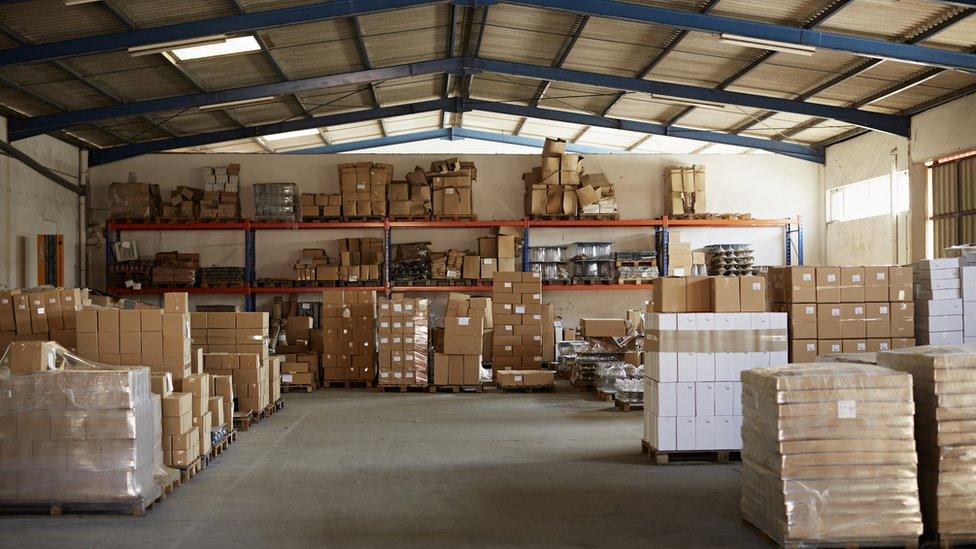NI economy had 'UK's best bounce back' after lockdown
- Published
- comments

The figures are likely to provoke further debate on how the Northern Ireland Protocol is affecting the economy
Northern Ireland's economy grew by 1.08% in the third quarter of this year, an estimate from the Office for National Statistics (ONS) suggests.
That is below the UK average of 1.3%, but similar to the performance in Scotland and Wales.
Further analysis of ONS data by the Financial Times, external suggests Northern Ireland has had the best post-lockdown bounce back of any UK region.
Output of the NI economy was just 0.3% below where it was at the end of 2019.
London was the next best performer with output 1.8% lower than pre-pandemic levels.
The West Midlands was the worst off with output still down by almost 10%.
The data needs to be treated with some caution as it is an experimental measure with significant margins of error.
However it is similar to other recent official economic data for Northern Ireland.
'Highest on record'
The Northern Ireland Composite Economic Index (NICEI) suggests that the economy recovered to its pre-pandemic levels of output in the second quarter of this year.
That data, which is produced by the Northern Ireland Statistics and Research Agency, showed private sector output was still slightly below pre-pandemic levels while public sector output was above.
Labour market data also shows that the number of people on company payrolls in Northern Ireland is the highest on record and has been above pre-Covid levels for five consecutive months.
However self-employment has been much slower to recover than employee jobs.
The most recent employment rate, which covers both types of work, was still 2.2 percentage points below pre-pandemic levels.
The ONS figures are likely to provoke further debate on how the Northern Ireland Protocol is affecting the local economy.
The protocol keeps Northern Ireland inside the EU single market for goods, so unlike the rest of the UK, Northern Ireland exports are not subject to checks and controls when entering the EU.
However, goods arriving into Northern Ireland from the rest of the UK are now subject to checks and controls which adds costs and complexity.
Assessing the precise impact of the protocol is difficult because of incomplete trade data and confounding factors like global supply chain disruption.
Related topics
- Published16 November 2021

- Published30 September 2021

- Published1 June 2021
